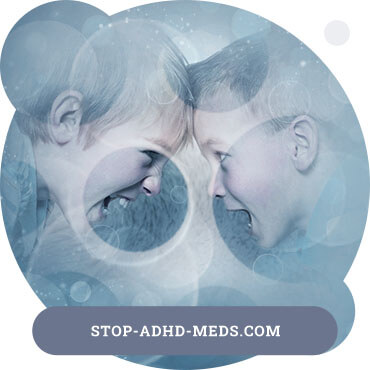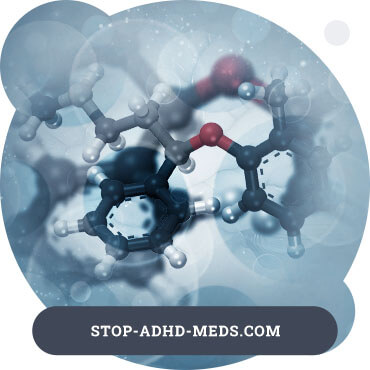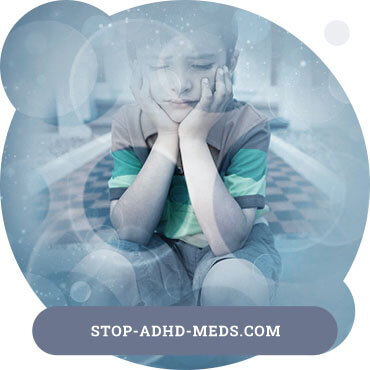Depressive moods and pathological anxiety are often interrelated. A depressed mood is often combined with anxious tension. Patients with signs of mood disorder and anxiety disorder are most common. In such cases, comorbidity is indicated. Mood decline and aggression are common in the same patient, regardless of diagnosis, and mood disorders often go hand in hand with manifestations of aggression. Aggression can be directed at other people or at oneself, manifested by self-rejection and suicidal tendencies. In the latter case, the person becomes irritable, emotionally lazy, impatient; angry outbursts are observed.

The combination of mood disorder and aggression or anxiety disorder and aggression are less studied than the combination of mood disorder and anxiety disorder. In addition, modern psychiatry distinguishes between nosological forms of mood and anxiety disorders, but not aggressive disorders. This makes it difficult to investigate combinations of different disorders. For this reason, I will confine myself to discussing Mixed Mood and Anxiety Disorder. Depression is not only often combined with anxiety disorders, but also with conditions related to the II-axis, especially if the latter are characterized by anxiety, unreasonable anxiety and fear, and feelings of insecurity. Both depression and dysthymia are combined with anxiety disorders in 80% of cases. In close relatives of depressed patients, personality disorders are common. However, these aspects will not be touched upon in this paper. We would like to emphasize that comorbidity is one of the most difficult problems in the study of depression. From whatever perspective depression is studied - from the point of view of biology, epidemiology, therapy, the fact that most patients have a combined diagnosis of the I-axis and an additional diagnosis of the II-axis makes it very difficult to interpret scientific data. Should these conditions be considered the result of depression or one of the accompanying diagnoses or components thereof? Very often this painful problem is simply ignored. The prevalence of comorbidity of anxiety and depression and ways to address it are discussed below.
The combination of depression and anxiety disorder
In depression (meaning depressive disorder and dystemia), generalized anxiety disorder and panic disorder are diagnosed in 22% and 14% of cases respectively. Approximately 18% of patients with panic disorder and 17% with generalized anxiety disorder have depression. These data reported by Sanderson & Wetzler are averages of a sample with large swing limits because different authors report very different results. For example, Pini et al. diagnosed panic disorder in 36.8% of bipolar affective disorder, 31.4% depressive disorder, and 13 patients with dysthymia. Generalized anxiety disorder was diagnosed in 31.6% of patients with bipolar affective disorder, in 37.1%) - with depressive disorder and in 65.2% - with dystymia. While past depressive episodes are taken as a criterion for comorbidity, the number of patients with both panic and depressive disorders increases significantly, according to some sources, to 60%). Panic attacks are less common in the history of depressed patients. According to Dobson & Cheung 12's comorbidity meta-analysis, 42% to 100% (67% on average) of depressed patients also suffer from anxiety disorder and 17% to 65% (40% on average) of depressed patients. Depressed patients are much more likely to have anxiety symptoms than the DSM criteria for detailed anxiety, and depressed mood is much more likely than depressed patients to have anxiety symptoms by the same criteria. Depressed patients scored as high on the anxiety scale as they did on the depression scale. Moreover, depressed patients and dysthymia patients had even higher scores on the anxiety scale than patients with anxiety disorder. The relationship between anxiety and mood disorder is not clear. There are two possible options. The first is that anxiety disorder is caused by mood disorder, or vice versa. If it is, one disorder complicates the other. That's where I'll stop below. The second option is that both disorders arise from a general predisposition. In modern terms, anxiety and depression are different stenotypic manifestations of the same genotypic feature. This view is supported by recent studies in women. However, there is also the opposite view: if there is a common predisposition, relatives of depressed patients should have more anxiety disorders and relatives of depressed patients should have more depression. However, there is no conclusive evidence to suggest this and the issue remains a matter of discussion. From a diagnostic perspective, the problem of combining symptoms, syndromes, and nosological units of affective and anxiety disorders in the same patient has been tried in several ways: by hierarchical exclusion rules and by formulating a combined diagnosis. These approaches will be discussed below.
Strategies used to navigate the diagnostic labyrinth of combined anxiety and depression
Hierarchical Exception Rules
The third edition of the DSM describes a hierarchical principle by which mental illness is ranked according to its severity. Schizophrenia is considered more severe than depression, and the latter is considered more severe than anxiety disorder. Only one diagnosis in the I-axis is allowed, with a higher rank disease taking precedence over others. Thus, if a patient suffers from depression and panic disorder, the latter is ignored. I hold the view that the hierarchical principle of diagnosis in psychiatry is not acceptable. First, the idea of severity is uncertain. What is taken as a criterion here? Loss of ability to work? The severity of subjective experiences? Degree of personality disintegration? It is impossible to prove that paranoid schizophrenia is more severe than depressive disorder; and melancholia and dystemia are more serious than panic disorder. Second, there is little evidence to suggest that the subordinate disorder is a consequence of a higher rank disease, such as that anxiety disorders occur in the context of depression. Finally, the results of the study of mental patients are distorted by the hierarchical approach. Someone studies a depressive patient and correlates their findings with depression that is "officially" valid but ignores the combined illness. Silence is not the solution to the comorbidity problem. The DSM-IIIR and DSM-IV maintain a hierarchical principle, albeit in a milder form. Several diagnoses may be formulated, but one is referred to as the main diagnosis (the one that gave rise to hospitalization or a referral). However, what is the diagnosis of a patient with alcoholism, if he or she is in a constant state of low spirits, panic attacks and, in addition, personality disorders of two or three types? The choice of treatment tactics requires an answer, even though in most cases he is subjective. Again, there is the temptation to solve the problem of comorbidity on the principle: no comorbidity - no problem. If there is a combination of different mental disorders, the more legitimate question is: which diagnosis is the primary one," that is, which disease, diagnosed in the I-axis, emerged earlier? It is logical to assume that this is the primary disorder and the other diagnosis in the I-axis is secondary. The facts in favour of such a view would provide scientific justification for the hierarchical principle (see also section on CETA-depression). In retrospect, it is difficult to address the question of primary disease. Forward-looking research is needed, but it has barely been done. Another way to solve the diagnostic problems associated with a combination of anxiety and depressive disorders is to formulate a combined diagnosis. Three examples will be considered: Atypical depression, Mixed Anxiety/Depressive Disorder, and the newly developed CETA concept.

Atypical depression
The concept of atypical depression, which combines expressed anxiety and mood disorder, was proposed in 1959 by West & Dally and soon modified by other authors Sargant Pollitt and Hordei." This concept is based on observation of a group of patients who were not helped by tricyclic antidepressants and electroconvulsive therapy, but were effectively treated with monoamine oxidase inhibitor (MAO) iproniazid. Patients had symptoms of depression and various anxiety disorders such as generalized anxiety disorder, panic attacks, phobias. They often had a perversion of "vegetative" symptoms when compared to the classic manifestations of vitality (endogenous) depression, such as hyperphagia instead of anorexia, hypersomnia instead of insomnia; increased rather than decreased libido; and increased symptoms in the evening rather than morning hours. Mood disorders were often unstable, but reactivity (i.e. ability to recover from depression) was maintained. Hysterical personality traits came to the fore. Thus, conceptually atypical depression had a rather vague form. For example, it was unclear how it correlated with neurotic depression, which was a nosological unit at the time. The possibility that depression in these cases was secondary to anxiety disorder and that MAO inhibitors may have had a positive effect on anxiety disorder symptoms has not been discussed. In summary, the hypothetical specific effect of MAO inhibitors on this type of depression was not confirmed in a double-blind controlled study. Consequently, the West & Dally concept was not supported. Both the amitriptyline and MAO inhibitor were more effective than placebo inhibitors in atypical depression. Pitt argued that Atypical Depression is a heterogeneous group of disorders that includes "anxious depression" and forms with perverted, i.e., "autonomic atypical" symptoms. Davidson and co-authors divided atypical depression into groups A and V, respectively. Klein and co-authors proposed another division - into a group with perverted vegetative symptoms and into a group called "hysteroid dysphoria", which was characterized by hysteroid personality traits, high activity in remission and low tolerance for rejection. Ultimately, when Ravares and Co.25 reported that phenelzine was better for depressed patients who were still able to enjoy pleasant events than amitriptyline, the notion of mood reactivity was officially introduced into the set of definitions of atypical depression. Thus, atypical depression that has no clear definition, differs little from the nosological forms close to it and is constantly enriched with new features has formed into a kind of diagnostic monster. At the same time, it has been published that some atypical symptoms (hyperphagia, hypersomnia) are better treated with MAO inhibitors than with tricyclic antidepressants. Based on these findings, a Colombian research team led by Donald Klein proposed a working definition of atypical depression. The following diagnostic criteria were presented: symptoms of depression according to the RDC (Research Diagnostic Criteria) or the DSM (Diagnostic and Statistical Manual of Mental Illness); mood reactivity; one of the following symptoms: increased appetite/periodia/weight gain; hypersomnia; increased fatigue; low tolerance for rejection. The latter criterion is now part of the definition of social phobia. The presence of anxiety is currently not considered mandatory for a diagnosis, although it is often found in atypical depression. Thus, the definition of atypical depression has become clearer, but not more balanced. Perverted autonomic symptoms now form a block (cluster), although this is disputed by Levitan et al. The hypothesis that depression with such symptoms is fundamentally different from depression with typical autonomic symptoms has merit. However, lability of mood is a symptom of a different order and is also difficult to diagnose. It should therefore not be confused with twisted vegetative symptoms. A Colombian team of researchers has shown that phenelzine is more effective in treating atypical depression than imipramine. In another study, phenelzine was no different in efficacy than fluoxetine. Further confirmation of the validity of the concept of atypical depression was obtained in Asnis and colleagues' experiments. They found that patients with atypical depression exhibited greater changes in plasma cortisol levels when using serotonin-desipramine reverse capture inhibitor than patients with classic depression.
Overall, it can be concluded that attempts to define atypical depression as a combination of anxiety and depression have failed. At the same time, based on pharmacological and biological evidence, a specific type of depression with "twisted" vegetative symptoms can be identified.
Mixed anxiety and depression disorder
The interruption of symptoms of anxiety and mood disorder is quite significant, but the combination of depressed mood and anxiety is even more typical. General practitioners are more likely to deal with this set of complaints than psychiatrists. In 80% of patients at five primary care facilities in various parts of the United States, a set of symptoms of depression and anxiety have been identified that did not reach the intensity of the developed anxiety or affective disorder, but had a significant impact on labor activity and social life. Nonspecific affective disorders, which Dohrenwerd has defined as "demoralization", are very common in the general population. Murphy found that in a randomly selected group of people, 12.5% complain of depression and anxiety attacks, which are fairly long (more than 1 month) and have a significant impact on work ability and social activity. Based on these data, a new type of depression was identified as "mixed anxiety-depressive disorder", which was included in the DSM-IV (as a category under study) and ICD-10. For a number of reasons, I hold the view that the diagnosis is extremely poor. First, it is not defined clearly enough. According to DSM-IV, dysphoria is considered to be the main symptom and, oddly enough, anxiety is not necessary. Four out of ten symptoms are required, but most are also included in the definition of recurring depressive disorder and dysthymia. Finally, the patient cannot be diagnosed with another affective or anxiety disorder. However, these concepts are so intertwined that the criterion of severity becomes decisive. Thus, the proposed diagnostic category is a mixture of mild forms of affective and anxiety disorders. However, this is not stated clearly enough and no criterion of severity is introduced. Furthermore, the differences between this category and the affective state, called anxiety, are not clearly defined. This creates a risk that the psychiatrist will not deal with the pathology, but with reactions to difficulties in personal life. Psychiatry will then overstep its boundaries and be unable to effectively perform its mental health function. In addition, the authorities, who had been misled by the inflated figures of depression, could make bad policy decisions. Another shortcoming of the concept of mixed anxiety-depressive disorder is that it has nothing to do with personal disorders. Feelings of discomfort, including depressed mood and anxiety, are often linked to internal or interpersonal conflicts that form pathological personality traits. Another question arises as to whether the anxiety-depressive disorder is merely a mild form of "total" (DSM) anxiety or affective disorder. The DSM criteria for anxiety and depression (duration, severity, flow) are arbitrary enough. It is not known whether such depression can occur as a reaction to physical illness. This question is valid because most studies of anxiety and depression are done in the general population or in patients seeking primary care. No data are available on special treatments, the course of the illness, psychiatric history, or hereditary burdens of this type of depression. Thus, the concept of mixed anxiety-depressive disorder is not clearly defined and not sufficiently substantiated. Its introduction into clinical practice is fraught with superficial diagnoses. Patients often make vaguely worded complaints, including about anxiety and spiritual decline. If a doctor has a ready-made pseudo-diagnosis at hand, they will eliminate the need for painstaking analysis and may prescribe unnecessary antidepressant or anxiolytic treatment. In summary, the mixed anxiety-depressive disorder category does not have clear distinctions and cannot serve as a nosological unit for describing conditions that combine signs of mood disorder and anxiety.
CETA depression
Connecting hypothesis
Recently, I proposed a hypothesis for a subtype of "cortisol-induced stress-induced serotonin-related anxiety-aggressive depression", short for SeCA-depression. This is a typical yawning hypothesis. It combines depression on the one hand and aggression with anxiety on the other. It postulates the existence of a biological mechanism that mediates the connection between the complex psychotraumatic experience of the personality structure, on the one hand, and psychopathological syndromes (anxiety, aggression, low mood), on the other. At the same time, disorders of serotonin-dependent neurotransmission systems are combined with dysfunction of the hypothalamic-pituitary-adrenocortical axis. Such dysfunctions are typical for patients with mood disorders. I would like to briefly describe the main biological, psychopathological and psychological characteristics of CETA depression (so far only depression of a hypothetical subtype). More detailed information can be found in previous publications.
Articles
Biological characteristics
A number of serotonergic system disorders are detected in patients with CETA. In cerebrospinal fluid (CSF), the concentration of the main serotonin metabolite (5 hydroxytryptamine - 5GT) - 5hydroxyindol acetic acid (5GIUK) is reduced. In humans, as in animals, there is a close correlation between the content of 5GIUC in the CSJ and different parts of the brain. Decrease in 5GIUK levels in the CSJ, therefore, means that 5GT is slowed down in a certain area of the brain. Not only does 5GT metabolism decrease; test results indicate desensitization of the serotonin receptor. The introduction of an indirect 5GT receptor agonist - L tryptophan, which in the brain quickly turns into 5GT, is accompanied by inhibition of serotonin dependent reactions, such as increased production of prolactin by cells of the pituitary gland. The results, tests with selective post-synaptic 5GT receptor agonists indicate the participation of this serotonergic subsystem in desensitization of 5GT receptors. In animals, the 5GT receptor system plays an important role in the expression of anxiety and some forms of aggression. Cortisol inhibits the function of the 5GT system by inhibiting the expression of the gene encoding this receptor. Serotonergic system disorders are not specific to any particular syndrome or nosological form of depression. Rather, they are associated with mental disorders that may occur in depression. Decrease in 5GIIC is correlated with a sense of anxiety and aggression (internal or external). Decreased receptor function for 5GT correlates with increased aggression and impulsivity. These correlations occur independently of the nosological category describing the psychopathological phenomenon. Thus, biological disorders are specific functionally, but non-specific at the level of syndromes or nosological units. Anxiety and aggressiveness in depression come to the fore in some situations, while in others they play a secondary role. This explains why some patients have serotonergic system disorders while others do not. Decrease in the 5GIIC level in the CSJ is a sign of depressive disorder, as it is also observed during remission. Moreover, the low 5GIIC in the CSJD correlates with increased risk of exacerbation and increased incidence of mental illness among relatives of depressed patients when compared to patients with normal 5GIIC levels in the CSJD. Given these data, we hypothesize that a decrease in 5GT central metabolism is a factor prior to depression in depressed individuals who are in difficult circumstances. Whether 5GT receptor functions are impaired remains to be seen. 5GT metabolism disorders have a pathogenetic significance, that is, they represent the biological substrate of depression, not its consequence. This conclusion follows from experiments with 5hydroxytryptophan (5GTF), a 5GT precursor that, like tryptophan, rapidly converts to 5GT in brain tissue. We have shown that 5GTF has therapeutic and prophylactic effects in depression, especially in patients with low concentrations of 5GIUC in the CSJ.

These studies were conducted before the introduction of serotonin backsliding inhibitors. At that time, 5GT precursors were the only means to more or less selectively increase its synthesis in the brain.
Thus, violations of 5GT metabolism and serotonin receptor function, which were initially identified in a separate subgroup of depressed patients, are not related to depression itself, but to increased anxiety and aggressiveness. Changes in the serotonergic system were found to have pathogenetic significance as factors of depression predisposition.
Psychopathological features
In CETA suppression, exacerbation often begins with anxiety and heightened aggression (irritability, arguing, negativism, outbursts of anger). The depressed mood appears a little later. The development of a complete depressive episode is also not mandatory. At times there is increased anxiety and aggressiveness that is not accompanied by an unfolding depressive syndrome. It should be emphasized that anxiety and aggressiveness are closely correlated, regardless of the nosological form of the disorder. With this in mind, we hypothesize that CETAdepression is characterized by an initial limitation in the ability to manage anxiety and aggressiveness, which leads to mood disorder that turns into depression. Ironically, what we call "serotonin-related anxiety and aggressiveness depression" is not essentially a primary mood disorder.
The personality traits
In this type of depression, neurotic traits are emphasized and tolerance for psychologically traumatic events is reduced. Freud's concept of the neurotic personality has been transformed into a personality disorder, "the yurts of which the patient perceives not as pathological, but as inherent in him ("doctor, I am what I am"), despite the fact that the life of the patient and his loved ones can be seriously ruined. For example, the patient may experience a sense of danger, dependence, alienation, lack of recognition of authority; excessive self-esteem; and always consider himself right. This type of personality disorder is common but ignored by the DSM. Individuals with a neurotic character are psychologically unstable and vulnerable under stress.
Hypothesis of CETA suppression All three mentioned factors are biological, psychopathological and psychological, and interact with each other. In patients with CETAdepression, the serotonergic system, especially the 5GT receptor system, functions at the minimum acceptable level. Under normal conditions, the weakness of this system is compensated for; under stress, it begins to manifest itself primarily by limiting the ability to manage anxiety and aggression. It should be noted that increased anxiety and aggressiveness as well as apparent or suppressed anger are essential components of the stress syndrome. When patients with CETA depression find themselves in a psychologically traumatic situation, they experience a sense of tension and discomfort; the hypothalamo-pituitary-adrenocortical axis is activated and cortisol secretion is increased. In this case, the oppression of 5GT receptor system under the influence of cortisol is faster and stronger than normal. As a result, the patient loses the ability to control a sense of anxiety and aggression, they get out of control. Increased anxiety and aggressiveness affect the mood, causing the development of depression. In other words, these patients are hypersensitive to stress, and they easily show symptoms when they are in certain stressful situations.
Patients' exposure to stress has a dual origin: biological, i.e., functioning of the 5GT receptor system at the lowest possible level; and psychological, neurotic. This dual predisposition can be seen as a starting point for the process leading to affective pathology against a background of mental trauma. The biological basis of the process is an abnormal interaction between the serotonergic system and cortisol. We will call this type of depression "cortisol-induced stress-induced, serotonin-related anxiety-aggressive depression" (SETA depression) and assume that selective post-synaptic 5GT receptor agonists and/or cortisol antagonists and corticotropinrilizing factor are most effective for its treatment. Supporting treatment by post-synaptic 5GT receptor agonists can be used in combination with psychotherapy to increase resistance to stress. 5GT receptor agonists and cortisol corticotropinrilizing factor antagonists are in the development stage, so our assumption can be tested soon.
"Functionalization" and "verticalization" in psychiatric diagnosis
The close relationship between anxiety and affective disorders, anxiety and depression symptoms creates serious problems in diagnosis and therefore in the performance of the study. Whichever aspect of depression (or anxiety disorder) is studied, there is always the question of whether the results are related to depression (anxiety disorder) or to concomitant conditions in axis I and II. The rules of hierarchical exception do not solve the problem, but take it beyond the discussion. Two combined diagnoses do not solve the problem either. Moreover, they have not been proven valid. Probably, they represent opportunistic conceptions of a peculiar escape from the problem by means of mechanical connection of anxiety and depression. The CETA depression concept (still hypothetical) is not a complete solution to the problem. However, within a separate subtype of depression, it combines anxiety, aggressiveness and mood disorder into a single process based on temporal and causal relationships. Moreover, the significance of this concept is determined by two new diagnostic approaches, which, in my opinion, clear psychiatry of subjectivism and give it a more scientific character. I call these methods "functionalization" and "verticalization". Functionalization consists in decomposing the patient's mental state into constituent elements, i.e. separate psychological disorders. Thus, within the framework of depression, one can distinguish disorders of mood, anxiety, aggressiveness; disorders of motor activity, thinking speed, ability to be happy, etc. Functionalization allows to determine in detail, even quantitatively, in what component of the "psychological apparatus" and to what extent there are deviations from norm, and which components function normally. "Functionalization" of the diagnosis is accompanied by "verticalization", i.e. ranking of disorders of psychological function in relation to the biological substrate in their basis. It is established whether the abnormalities are directly or indirectly related to the biological substrate. In the first case the phenomenon is primary, in the second case it is secondary. This type of research, which was considered utopian until recently, is close to practical realization. Proof of this is the concept of CETA suppression. Violation of the ability to control anxiety and aggression is directly related to serotonergic system dysfunction. Consequently, these psychological disorders are primary and "set the rhythm" of depression, while mood disorders are secondary. The study of the vertical structure of the psychopathological condition and its biological features are two inseparable and interrelated processes. Primary psychological dysfunctions should be the focus of biological research in patients with mental disorders. On the other hand, they can provide additional arguments for or against the primary character of disorders. Again, the CETA depression is an example. We have studied the serotonergic function of patients with anxiety and increased aggression, suggesting the primary nature of this psychopathology. Conversely, in these studies, we obtained data to support the primary nature of these mental symptoms. "Functionalization" and "verticalization" in the diagnosis of mental illness allows us to go beyond the narrow scope of nosological forms that have long dominated psychiatry, often contradicted the real clinical picture and made it difficult to interpret scientific data.
Individual diseases or different forms of reaction?
Since Kraepelin, psychiatry has followed the nosological model of diseases. In the third and later editions of the Diagnostic and Statistical Manual of Mental Diseases (DSM) this trend has been further developed. However, there are reasons to doubt the validity of this approach. The nosological model of diseases is based on two assumptions:
- Mental disorders appear as separate, i.e. specific, pathological entities;
- Once the syndrome is identified, its etiology, course, prognosis and preferred treatment can be determined with high probability. The validity of these assumptions is questionable. An example of affective and anxiety disorders can be cited to support this. They are rarely "pure"; comorbidity is the rule, not the exception. Predictions about the course, prognosis, and efficacy of treatment for these disorders are highly uncertain. Psychotropic drugs are in most cases not selective to certain nosological forms. For example, antidepressants are effective for both affective and anxiety disorders, and some new anxiolytics, such as 5GT receptor agonists, have antidepressant effects. In this regard, it is appropriate to consider alternative disease models. In our opinion, the "form of response" model deserves close examination.
It is also based on two principles:
- Mental disorders as a whole are not separate, clearly differentiable entities;
- Their forms vary greatly from person to person and from person to person in the long run, so the course and prognosis of such disorders are unpredictable.
The variability in mental disorders can be explained as follows. At action of the pathogenic factor, biological or psychological on the central nervous system, function of separate systems of neurons is disturbed. Type of damage is defined by the nature of the factor and stability of groups of neurons. The outcome of the damage is thus individual and predictable only to an insignificant extent. The same applies to psychopathological phenomena associated with interneuronal regulation disorder. It follows that among psychiatric disorders it is impossible to distinguish separate, different entities. It is possible to describe only "clusters" of mental disorders, i.e. a group of psychopathological conditions that are to some extent similar, but differ in pathogenesis and, in principle, require a special (biological) approach to treatment. Examples of such diagnostic "clusters" include affective, psychotic and dementia-based forms of reactions. Psychopathological states that are part of them are comparable to clouds in the sky: one can describe the shape of a cloud floating in the sky, but every moment its shape changes. Within the "reaction form" model, it is natural that anxiety and affective disorders (both groups belong to a cluster of affective disorders) are often combined in different combinations. Thus, it makes no sense to artificially isolate individual syndromes from such a conglomerate of mental disorders, to attempt to identify their characteristics and to search for the cause. With the advent of a new model of disease, biological research in psychiatry must shift from nosological forms such as depression or dystemia to the primary psychological disorders that define the mental condition. Targeted psychopharmacological treatment will consist of specific drug effects on these very psychological "generators" of the disorder. I call this approach "functional psychopharmacology", in contrast to the nosological approach. It is obvious that "functionalization" and "verticalization" in psychiatric diagnostics are prerequisites for systematic research of the model of "form of reaction". It is too early to say which of the disease models is the nosological or "form of reaction" has the greatest heuristic value. However, I am convinced that the dominant, almost axiomatic position of the nosological model is not sufficiently justified; other models must be developed and investigated. I believe that the most important alternative is the 'form of reaction' model.
By: Dr. Peter Heinze













